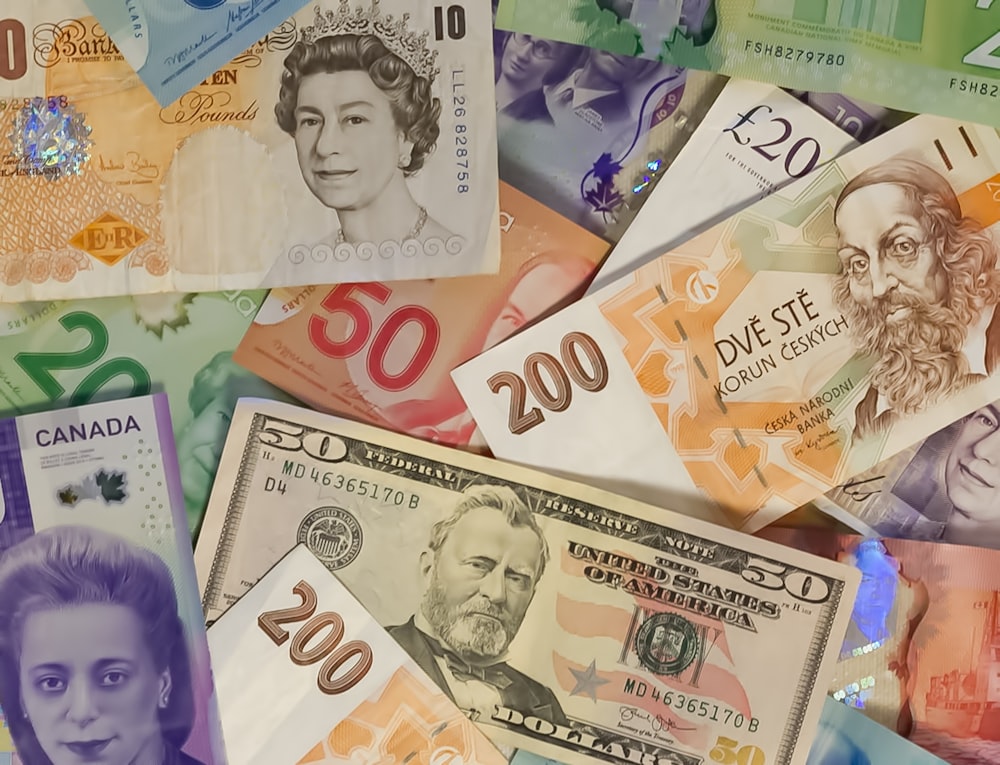FX Daily: Attention Turns To Turkey
Image Source: Unsplash
Ahead of tomorrow's main event of the week – speeches at the Fed's Jackson Hole symposium – attention today will turn to Turkey. In focus will be whether the Central Bank of Turkey accelerates its policy tightening in a return to a more orthodox policy. Consensus suggests probably not. Elsewhere, the dollar should remain steady, with jobs in focus.
USD: Focus on the jobs market
The dollar and US yields were knocked off their highs yesterday as an annual benchmark revision (up to March 2023) deducted 306,000 from the reported US payroll growth figures. Several expectations had in fact looked for a 500,000 reduction. The market reaction (a 10bp drop in the US yield curve) looked a little exaggerated but perhaps proves a reminder that the employment story is the most important US variable right now. In other words, US disinflation is welcome, but if the unemployment rate remains at its lows and consumption stays strong, inflation may never make it back to 2% on a sustainable basis.
For that reason, look out for the weekly initial jobless claims data today, where any tick higher to the 250,000 area could slightly weigh on US yields and the dollar. We would not expect big moves, however, before Federal Reserve Chair Jerome Powell's 1605CET speech tomorrow at the Fed's Jackson Hole symposium.
Given that the risk environment is a little better bid today – with Nvidia's results keeping the tech boom alive – DXY could trade slightly offered in a 103.15 to 103.50 range.
EUR: Pessimism reigns
Yesterday's worrying release of flash PMIs for August certainly made their mark on markets. The ECB's trade-weighted euro fell around 0.5% and the two-year EUR/USD swap differential widened by a large 10bp on the day. At around 145bp in favor of the dollar, this differential is back to the widest levels seen since March and is a clean EUR/USD negative. The EUR/USD test of the 200-day moving average at 1.0800 yesterday looked fully justified and were it not for those US payroll revisions, EUR/USD would be trading much closer to 1.0800 this European morning.
We have not heard much from ECB speakers recently (President Christine Lagarde will speak late tomorrow), but markets are quickly losing confidence that the central bank will be able to squeeze in another rate hike before the drop in eurozone activity closes the door on the tightening cycle. This is certainly frustrating the case for the EUR/USD to be making it quickly back above 1.10.
The clear near-term range for EUR/USD looks to be 1.0800-1.0930. Despite today's slightly better risk environment, we doubt investors will want to chase EUR/USD too much higher, and unless there is a sharp spike higher in US initial jobless claims today, EUR/USD may well end up gravitating back towards 1.0800.
GBP: Short-term rates remain the key driver
Yesterday's price action in EUR/GBP was telling. EUR/GBP briefly dipped under 0.8500 on the soft eurozone PMI releases only to surge to 0.8565 on the soft UK services PMI release. The soft UK data took a large 15bp out of pricing for the Bank of England (BoE) tightening cycle. We still think that the BoE will not deliver on the 60bp of tightening still priced by the markets and that EUR/GBP can later this year move back to the 0.87 area.
The only UK data of note today is the August CBI retail sales numbers and we suspect EUR/GBP continues to trade a 0.8500-0.8550 range, while Cable is quite steady near 1.2700 too.
TRY: Will 250bp of CBT tightening be enough?
The Central Bank of Turkey (CBT) meets today to set interest rates. In focus will be the pace at which monetary policy is tightened as new central bank governor Hafize Gaye Erkan pursues more orthodox monetary policy. So far, it is fair to say that the pace of policy tightening over recent months (900bp) has disappointed market expectations. And another 250bp rate hike to 20% in the one-week repo today would still leave real rates deeply in negative territory given inflation is running at close to 50%.
As ING's Chief Economist Muhammet Mercan writes in his detailed preview of the meeting, the more modest tightening can perhaps be explained by the central bank looking at a variety of adjustments in the unorthodox tools and quantitative tightening to complement the rate hikes. There is also some speculation that the pace of rate hikes could possibly quicken given three newly appointed members to the Monetary Policy Committee.
What does this all mean for the Turkish lira? While 35% implied yield through the three-month forwards does make the lira a high yielder, it does not seem as though the lira has yet attracted international demand for the popular carry trade. If the central bank can bring inflation and inflation expectations down, making real rates far less negative, then the lira could start to find some broader support. Otherwise, gradual depreciation on the back of high inflation looks to be the most likely path.
More By This Author:
Eurozone PMI Paints Worrisome Growth PictureUK Service Sector Enters Contraction As Rate Hikes Begin To Bite
FX Daily: A Busy Day Ahead Of Jackson Hole
Disclaimer: This publication has been prepared by the Economic and Financial Analysis Division of ING Bank N.V. (“ING”) solely for information purposes without regard to any ...
more



